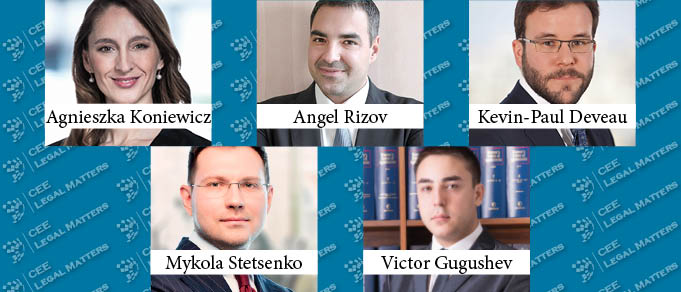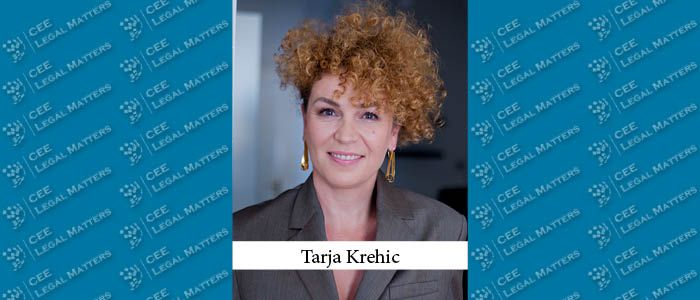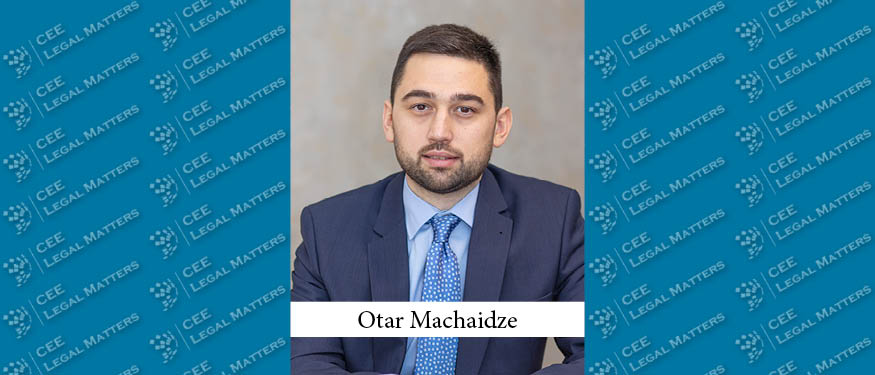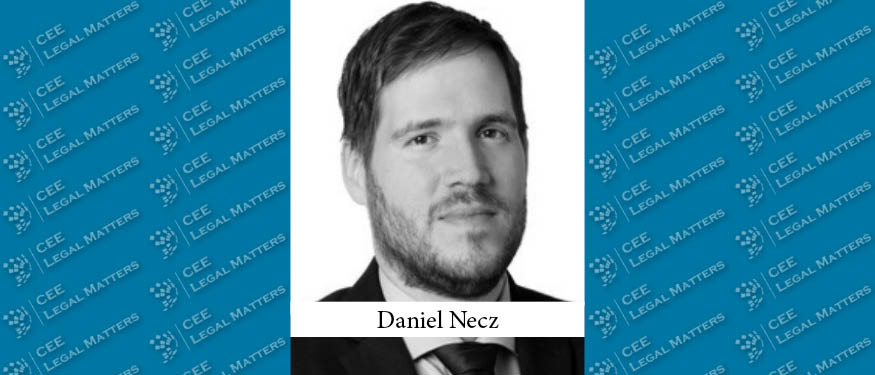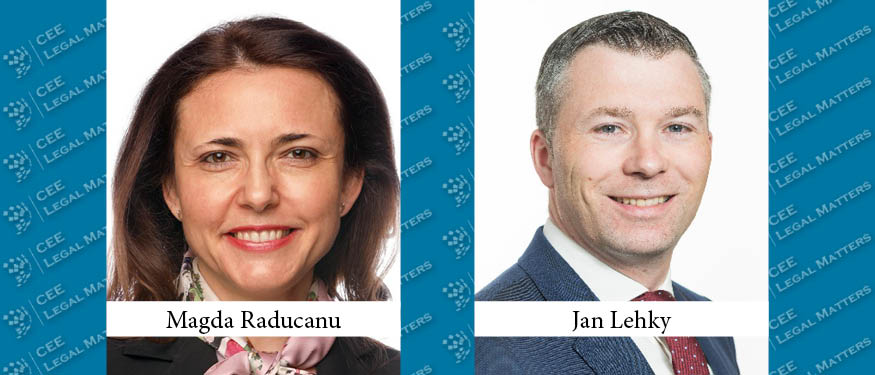While the Dealer’s Choice Conference in London could not be organized this year in a safe manner due to current events, on July 20, 2021, CEE Legal Matters sat down with several of the event’s sponsors to take a closer look at the Deals of the Year award winners this year.
Round Table Participants:
Agnieszka Koniewicz, Partner, Penteris
Angel Rizov, Partner, Kambourov & Partners
Kevin-Paul Deveau, Partner, Reed Smith
Mykola Stetsenko, Managing Partner, Avellum
Victor Gugushev, Partner, Gugushev & Partners Law Office, Bulgarian office of Pontes the CEE Lawyers
M&A Activity in CEE
Private Equity Notably Missing in DOTYs
With a notable decrease of PE deals among the DOTY winners this year, a natural first question was if the region is registering a decrease in PE activity or if it is simply a matter of funds focusing on smaller deals than in the previous years. Gugushev & Partners Law Office Partner Victor Gugushev explained that there is a lot of M&A activity in Bulgaria, but most of it is being carried out by strategic buyers, noting that both the volume and size of the deals of PE funds is comparatively much smaller. Kambourov & Partners Partner Angel Rizov agreed with Gugushev’s observation, adding that this “has not only been the case for the country in the last year, but is how the Bulgarian market has traditionally looked like.” In terms of M&A activity, he emphasized the energy and IT sectors as being particularly busy. In terms of PE, specifically, he noted that he was approached by one fund recently so there is some movement on that side, “though it’s too early to disclose the details.” Overall, on the PE side, “there is some movement, but relatively small when compared to strategic buyers,” concluded Rizov.
“Ukraine is definitely lagging behind in terms of PE activity,” noted Avellum Managing Partner Mykola Stetsenko. “There is, however, an uptake. We’ve seen a few smaller funds being established and they are slowly picking up speed, but the size of their deals is overall smaller.” He is also observing some interest from a fund expanding into Ukraine from the Caucasus, “but even there, the range of deals they are looking at revolves around EUR 5 million.”
For Poland, on the other hand, “the level of PE activity really depends on the sectors you are looking at,” commented Penteris Partner Agnieszka Koniewicz. “There is, for example, a lot of movement in the renewables sector with quite a few big transactions being completed either last year or in Q1 of this year,” she continued. “In particular,” Koniewicz noted, “PE funds do seem interested in some projects of considerable value in the country. There have been a few deals involving solar power plant platforms and wind onshore projects. Sure, when we compare those to the value of the offshore deals, like the one between Orsted and PGE, they are much smaller, but still of note.” According to Koniewicz, the market is getting more and more mature, “with an increased focus on portfolios – therefore the value of the deals is likely to only increase going forward.”
This is also the case in real estate according to Koniewicz, who reports not only a shift from retail to logistics, “but here, as well, the market is becoming more mature and a lot of transactions focus on portfolios. One example of this is Griffin’s recent transfer of its interest in a large portfolio to PE funds – the demand is there, and generally, logistics portfolios are a hot topic in Poland these days and we see a lot of developers building up or already selling large projects.”
A Lot of Hope in Renewables
Of the three energy deals, two of the DOTYs (Bulgaria and Greece) involved renewables. As Koniewicz noted earlier in the discussion, a lot of movement is happening in the renewables sector in Poland. Gugushev agreed: “speaking not just for Bulgaria, but for all of the markets of our Pontes network, we definitely have a new wave of transactions in renewables.” He noted that Poland is the golden child of the region in this regard: “I had a meeting with President Andrzej Duda recently and told him that I see Poland as an example to be followed by all European countries, in terms of governmental policies.” He noted that the sector is still one of the, if not the, hottest topic in the country, despite the Bulgarian Government not seeming nearly as committed to supporting renewables. “There’s a lot of projects happening at the moment. Our team alone works on projects totaling around 700 megawatts – so that should give you a feel of the overall level of activity in the market.” He noted that, from his conversations with colleagues from Pontes and the Western Balkans, a similar buzz can be observed in the entire region of CEE.
Rizov agreed with Gugushev on the level of activity in the sector in Bulgaria. In fact, he is expecting it to increase even more, explaining that “Bulgaria is currently submitting its proposition for the EU’s recovery plan, and, in line with the EU Commissions’ own proposed plans, I expect a great deal of that effort to be directed towards renewable energy.”
Stetsenko further affirmed that the trend is not unique to Bulgaria and Poland but is region-wide. “In Ukraine, renewables continue to be a hype.” He added: “I think the only difference is that the Ukrainian Government has been acting strangely in the last few years, and has pushed a few investors to file investment claims,” explaining that the Government decided to unexpectedly change tariffs, which naturally disappointed many investors. However, Stetsenko reported having reasons to expect more activity in the sector and pointed to “DTEK announcing its plans to switch completely to renewables by 2030. This is really ambitious with two-thirds of the plants in the country being owned by DTEK, but the company has announced it is planning to (and has already started to) invest in wind and solar big time.”
Local Technology Companies Making a Splash
Of the 13 M&A deals that won the DOTYs, two of them (Croatia and North Macedonia) represented home-grown technology companies going international – and there is hope to see more such deals in the future.
In this sector, Reed Smith Partner Kevin-Paul A. Deveau observed a lot of growth in Romania and across the region in the last few years. “We’ve seen a lot of companies in the region looking at raising capital, which has not been happening in the past,” he noted, raising the question of what that will look like for these companies in terms of their future development. “I see companies in Western Europe struggling in the context of the enormous capital that goes into U.S. technology companies,” he explained. Deveau pointed out that this raises questions for these companies to address: “do you continue to develop locally, do you enter into some form of M&A, do you move the founders to the US?” He elaborated that this is something that not just companies, but governments and the market as a whole need to come together to identify: “how do you retain talent in Eastern Europe and not just become the support of technology companies in the U.S. – especially since we already see a lot of examples of people offshoring in the region.”
Gugushev agreed with Deveau’s analysis and argued that, at least in the case of Bulgaria, the country’s focus and comparative advantage on IT is “not really the result of any particular governmental policy, rather a simple result of solid education and relative salaries.” He argued that Bulgaria has “become a Balkan hub for the IT and outsourcing sectors,” noting that, while the country has had a couple of notable transactions, “the best is yet to come in the sector, with many companies becoming larger and larger and raising more and more rounds.” He is optimistic about the industry: “the IT sector is really booming!”
Stetsenko echoed Gugushev’s and Deveau’s comments on the subject of highly-skilled labor, and noted a relative decrease in operational costs in Ukraine. “All of us in the region are competing to become the regional hub of major IT companies – or at least for their back-offices – while also keeping an eye out for India and Ireland,” he noted, adding that “ultimately, IT is simply booming into a huge industry around the world. I think there will be enough pie for all of us at this round table to have a piece.”
Deveau concluded the discussion on the sector by pointing to its drivers – “a combination of more and more people recognizing the skilled talent base in Eastern Europe, complemented by very good language skills, all at a more affordable rate than in Western Europe – while still benefiting from being well integrated into the European market.”
Consolidation in the Banking Sector – A Natural Step?
The DOTYs in Bosnia and Herzegovina, Hungary, Poland, Serbia, and Slovakia involved M&A in the banking/finance sector. Notably, Hungary’s award winner was the creation of a “superbank,” raising the question of what is driving these deals in the region and whether we can expect further consolidation in the near future.
Koniewicz believes that the observed consolidation in the banking sector is a “somewhat natural step.” She explained: “A lot of banks sprung up on the Polish market in the past – we have a lot even compared to some of the more mature markets. I think that in this hyper-competitive environment, it was only natural for it to happen.” She also noted that this competition is complemented by a few international banks simply looking to “escape a certain market, thus leaving their local operations up for consolidation with other players.”
Rizov agreed and said that the Bulgarian banking sector is dominated by subsidiaries of large European banks. He said that, just like Poland, Bulgaria has a lot of banks: “even now, after five-six big movements in the past years, we still have 25 banks operating in the market.” According to Rizov, all analyses on the ground, “especially due to the new COVID-19 context, indicate that we should expect more consolidation in the banking/finance sector.”
Deveau reported “a phenomenal amount of restructuring in the banking sector over the last ten years.” He explained: “looking at how the markets looked like ten years ago, almost no one is in the same position, with whole teams being completely reshuffled,” with this very much reflecting the fact that “big banks moved back from the region massively.” Looking at the local/regional players, Deveau noted that “it would be difficult to identify a pattern – OTP, for example, grew in some markets and shrunk in others.”
He described the sector as being “pretty much in a wait-and-see mode, primarily since banking, and commercial banking, in particular, is not particularly profitable right now.” He explained that the low margins are mainly a result of interest rates being at a historical low, which drives banks into a cost-saving focus. In contrast, Rizov noted that, while interest rates in his country are rather low, “Bulgaria has the benefit of not being in the eurozone, which means that banks have not had to decrease their rates as much as their parent companies from the rest of the EU.” Instead, he noted that banks in the country have had record-high profits this year, primarily driven by revenues from fees. This might not be long-lived in Deveau’s mind, however, with “the Government trying to force convergence towards the eurozone. Both Bulgaria and Croatia are now forcing themselves into a narrower margin, an evolution that is definitely interesting to follow and see how it plays out.”
And there is another trend on the horizon according to Deveau. He explained that, at the moment, “in Western Europe in general, and especially in the UK, banks are trying to figure out which aspects of investment banking they want to keep or which to scrap.” This, according to him, “is in big part due to the rise of non-banking funders,” on which CEE is still lagging. “That will likely change,” he noted. Stetsenko agreed: “we are seeing a lot of aggressive players coming into the market who are combining IT (e.g. payment solutions), with the traditional banking services – sometimes even piggybacking off the traditional banks’ infrastructures.” Overall, he expects a lot of activity in the sector as well, with a lot of changes in terms of the players, especially with the potential privatization of some state banks on the horizon.
A Reluctant State of Financing in CEE
Moving from movements in the banking sector to actual financing projects, Deveau said: “in London, we are kept very busy with development finance institutions work, especially from the EBRD, who has been busy trying to deploy capital into the region.” He elaborated: “I think there are financing needs in the economy, potentially not met by local financiers, but it’s difficult to pull in outside investors to provide capital to CEE during COVID-19 times.” Deveau explained that this stems from two reasons: “First – most are focused on their own balance sheets. Second – it is generally difficult to make a bet in a market you have not played in yet.” Despite that, he expressed hope that “this hesitation of lending towards the region will ease as we are coming out of the pandemic, and I would expect some of that financing to open up over the next 12 months.”
Stetsenko noticed the same reluctance in local banks, in terms of financing projects: “Ukrainian banks have not been very active in lending either. There are a few local reasons, but they generally prefer to invest in government bonds and, although interest rates are relatively high, they are still reluctant to advance their business to Ukrainian companies.” This unwillingness, he argued, “pushes many large corporations to explore capital markets, especially Eurobonds, to meet their capital needs – and that is certainly an emerging trend.”
Talking about Poland, Koniewicz noted that yes, there are low-interest rates with banks, but pointed out that that’s also the case with state bonds. She explained that because of this combination, “investors rather try to invest into equity or assets, which drives a lot of transactions based on equity without leverage from banks.” According to Koniewicz, the rationale is that they “have cash and don’t want to keep it in banks anymore” and they may simply “look for refinancing after a deal – but as an option, not as a must-have.”
On Infrastructure
While a couple of notable infrastructure deals won the DOTY for 2020 (the Czech Republic and Ukraine), the round table participants were generally reserved in their outlook for infrastructure projects.
The one optimistic-across-the-board perspective was shared by Stetsenko, who pointed out that the agricultural sector is one of the big drivers for infrastructure development in Ukraine: “It grows every year, and it requires infrastructure – from roads, to rail, to ports.” He added that the country “has had two successful PPPs in two seaports and is expecting more such projects. It will also either privatize or put up for concession many rail elements (such as stations).” Stetsenko noted that major investment institutions such as the EBRD are providing “major financing to interconnect Ukraine with the rest of the region, which adds further fuel to the infrastructure drive of the country.”
Deveau echoed Stetsenko’s comments on the role of EBRD in the sustained infrastructure efforts in the country, but that is where his optimism stopped. As to other jurisdictions, he stated that “there have been a lot of discussions about relatively large projects in Poland or Romania, but they are not really moving forward as fast as they should. There’s simply a sense that there are not enough shovels in the ground yet.” Deveau expects there will be a focus on these types of projects “given that EU funds have a particular focus on infrastructure,” however, he is not seeing a lot of focus on these coming out of London.
Koniewicz explained that quite a lot of infrastructure in Poland is owned by the state – “which might be an explanation for the lack of investment in the area.” She noted that, while there was “some interest in some terminals in Gdansk in the past,” at this stage there are no more such large infrastructure projects available, “excluding maybe energy projects.” This, she explained, is a result of “all of it being done by the national road agency, without real private player involvement.”
Joining the discussion, Rizov pointed out that last year Bulgaria saw one large concession – that of the Sofia airport, the largest airport, located in Bulgaria’s capital city. As for the current climate, he explained that “Bulgaria has not yet presented before the EU Commission its proposition for the allocation of its portion of the EU COVID-19 relief fund.” This, he added, is “because, in the last few months, we’ve had some political instability. Our former Government resigned at the beginning of April, and we’ve had a provisional Government in place since. Snap elections were held recently with the result showing that the long-time ruling party has lost its majority. That means we now have a few new players on the ground, but this makes it difficult to predict how PPP projects will look like.” Ultimately, Rizov expects that Bulgaria will submit its proposal and “we’ll see the funds allocated to Bulgaria and projects kicking-off.”
A Busy 2020
“2020 was a handful,” said Rizov, talking about the year as a whole. “The year saw a new big telecom player – United – enter the market and that was just one of the many M&A projects in the telecommunications and media and IT sectors,” he said. Furthermore, he reported that his colleagues “in the energy department have definitely been burning the midnight oil, despite COVID-19.”
“And I think the hype is not yet over,” Rizov concluded.
Koniewicz echoed Rizov’s sentiment that 2020 was “quite busy in terms of transactions.” She reported a lot of transactional work, especially in the real estate and energy markets: “It was for us at least as good, if not better, than 2019, both in terms of overall volume and value of transactions.” She concluded: “I was hoping I’d at least catch a week’s break at some point during the pandemic – it didn’t really happen.”
This Article was originally published in Issue 8.7 of the CEE Legal Matters Magazine. If you would like to receive a hard copy of the magazine, you can subscribe here.

